Home / OARF Scholarship Recipients Share Experiences OARF Scholarship Recipients Share Experiences
March 22, 2019 – We were thrilled to offer scholarships to attend our Organic Agriculture Research Forum in February and wanted share feedback we received from some of the recipients. Thanks once again to Ceres Trust for funding the scholarship program. As you will see from the comments below, their investment yields a strong return in the continuing education of both farmers and researchers.
DeLisa A. Lewis, Green Fire Farm
 I came to the Organic Agriculture Research Forum in Portland wearing two different hats, farmer and researcher. My family and I own a diverse, 40-acre farm in the Cowichan Valley on Vancouver Island, British Columbia, and I teach and carry out on-farm field trials, focused on soil health assessment, with the Faculty of Land and Food Systems at the University of British Columbia (UBC), in Canada. My goal was to hear from and connect with other organic systems researchers, farmers, and farm systems suppliers, and the research forum and trade show gave me all that and more! Over the delicious breakfast, a former co-worker from the UBC Farm found me, and we enjoyed a good catch-up session on family and farming. Grafting has been an interest for both of our farming operations since 2014, and the first Research Forum session was an outstanding, fast-paced overview of practical progress on that front. As an on-farm researcher, improving outreach efforts and field research design are ongoing areas of focus, and the lively Q&A sessions following each talk provided useful synthesis and additional connections for each of those key points. Break times and lunch were great opportunities to enjoy the bounty of the Pacific Northwest growing region, and to connect with growers and trade show vendors. With plastic bag bans and the food systems waste stream challenge at the forefront of the conversation in many of our Vancouver Island cities, I especially appreciated the award- winning packaging display of A&A produce. Also, during the break, I re-connected with Diane Nichols, of the UC Santa Cruz Farm & Garden Project. My organic farming life began in Santa Cruz, farming under the mentorship of a former Apprentice leader, Dennis Tamura. The deep and wide roots of the organic farming, research and teaching communities that reach up the west coast and into British Columbia were well represented at this Forum, and I am deeply appreciative for the opportunities to be present and recharge.
I came to the Organic Agriculture Research Forum in Portland wearing two different hats, farmer and researcher. My family and I own a diverse, 40-acre farm in the Cowichan Valley on Vancouver Island, British Columbia, and I teach and carry out on-farm field trials, focused on soil health assessment, with the Faculty of Land and Food Systems at the University of British Columbia (UBC), in Canada. My goal was to hear from and connect with other organic systems researchers, farmers, and farm systems suppliers, and the research forum and trade show gave me all that and more! Over the delicious breakfast, a former co-worker from the UBC Farm found me, and we enjoyed a good catch-up session on family and farming. Grafting has been an interest for both of our farming operations since 2014, and the first Research Forum session was an outstanding, fast-paced overview of practical progress on that front. As an on-farm researcher, improving outreach efforts and field research design are ongoing areas of focus, and the lively Q&A sessions following each talk provided useful synthesis and additional connections for each of those key points. Break times and lunch were great opportunities to enjoy the bounty of the Pacific Northwest growing region, and to connect with growers and trade show vendors. With plastic bag bans and the food systems waste stream challenge at the forefront of the conversation in many of our Vancouver Island cities, I especially appreciated the award- winning packaging display of A&A produce. Also, during the break, I re-connected with Diane Nichols, of the UC Santa Cruz Farm & Garden Project. My organic farming life began in Santa Cruz, farming under the mentorship of a former Apprentice leader, Dennis Tamura. The deep and wide roots of the organic farming, research and teaching communities that reach up the west coast and into British Columbia were well represented at this Forum, and I am deeply appreciative for the opportunities to be present and recharge.
Brian A. Mitchell, Colorado State University
As a PhD student and researcher at Colorado State University, I value the science-backed information that was presented at the OARF. It was interesting to listen to and engage with more than a dozen speakers, who discussed topics ranging from mycorrhizal fungi use in organic systems to the economics of utilizing whole-farm insurance to climate change modeling for organic agriculture. There are so many exciting projects going on at universities around the country focused on understanding and improving organic agriculture!
Nicolette Lax
During the two years I conducted my thesis on season extension practices for organic agriculture, many sunny days in the lab were spent thinking about working more outside, on the farm. Every field day left me inspired to get back out to the farm, and helped me see the importance of the research I was conducting.
Now, having spent three seasons out of the lab and permanently on an organic farm, I often daydream about researching the questions and problems we encounter every day. When we’re in the hustle of the summer season we only have time to postulate solutions to our pest problems, more efficient cultivation practices, or more quantitative evaluations of our soil. This winter, upon reflection, I realized there shouldn’t be such a dichotomy between my love for farming and my interest in research.
At the forum, I was finally able to wear both hats, of a farmer and a researcher, and gain a broader perspective from having both backgrounds. It seemed many other folks in the room where also of these mixed backgrounds, which made for very interesting and relevant research being shared. The forum offered a glimpse into the possibilities of connecting farmers and researchers, and inspired me to pursue this collaboration. I felt that I left the forum with an array of resources that I’m excited to bring to the farm this season, as well as an understanding of other research opportunities and connections that exist in the sustainable agriculture community.
Sarah Barney
MS student and National Science Foundation Graduate Research Fellow in the School for Environment and Sustainability at the University of Michigan
My first time at Organicology went above and beyond my expectations. As an academic by training and a beginning farmer, I enjoyed the diversity of the participants and content at the conference. While I have attended many academic conferences in the past, I appreciated the Organic Agriculture Research Forum as it allowed for discussion of agricultural research with non-academics. This kind of bridging across industry, academia, grass-roots organizations and farmers is critical to the continued success of sustainable agriculture and its contribution to a more just food system. This will definitely not be my last Organicology!
Tessa Barker
Oregon State University, incoming Crop Science Graduate Student
 As a graduating senior and soon-to-be graduate student, this was my first time attending the forum. I was pleasantly surprised by the diversity in oral presentation and poster topics, ranging from crop insurance, to pest management, and whether or not organic farmers were ready for new food safety regulations. At the same time, throughout the day I started to see connections between the array of topics, and the projects my own research team works on. One presentation that we all found intriguing was Amanda Marabesi’s talk, entitled, “A phenomenological inquiry into producers’ experiences growing organic produce.” As part of the social science segment, this presentation centered on a survey of growers and extension agents, regarding their experience with organic agriculture in Georgia. Our team has conducted a number of surveys, and I am currently in the midst of conducting interviews with olive growers in Oregon. Despite the different regions and questions our surveys focused on, I found it enlightening to see how Marabesi presented her findings, and how she used the data to tell a larger story about the organic industry in Georgia.
As a graduating senior and soon-to-be graduate student, this was my first time attending the forum. I was pleasantly surprised by the diversity in oral presentation and poster topics, ranging from crop insurance, to pest management, and whether or not organic farmers were ready for new food safety regulations. At the same time, throughout the day I started to see connections between the array of topics, and the projects my own research team works on. One presentation that we all found intriguing was Amanda Marabesi’s talk, entitled, “A phenomenological inquiry into producers’ experiences growing organic produce.” As part of the social science segment, this presentation centered on a survey of growers and extension agents, regarding their experience with organic agriculture in Georgia. Our team has conducted a number of surveys, and I am currently in the midst of conducting interviews with olive growers in Oregon. Despite the different regions and questions our surveys focused on, I found it enlightening to see how Marabesi presented her findings, and how she used the data to tell a larger story about the organic industry in Georgia.
During the poster session, I presented on my team’s research on containerized strawberry transplants, and experienced the thrill of sharing this project in which I had invested so much hard work and effort. Due to the small size of the poster session, I was able to walk around and meet the other presenters, and connect with those doing work that was similar to mine. The poster I found most interesting was Claire Hodge’s, exploring deep winter greenhouses in Minnesota. Again, this research involved a very different climate than Oregon, where I have done all of my student research. However, we found common ground in that both of our research teams are exploring season extension.
Attending this conference allowed me to see people at all stages of their careers, asking important questions about organic agriculture. But perhaps more importantly, it reminded me of the value of connecting across different regions, different crops, and different disciplines in terms of natural or social science. In my day-to-day student research, I tend to be fairly focused on the crops our team focuses on. However, not all of the resources and connections I find concern organic production of these crops. Events like the OARF are unique in that they bring organic researchers together, not only to find what we have in common, but also to inspire one another and consider approaches we may never before have encountered.



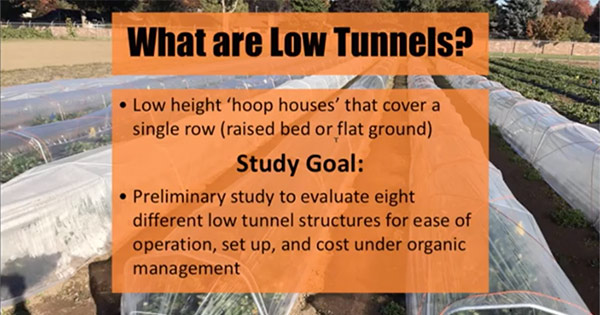 March 22, 2019 – Recordings from the 2019 Organic Agriculture Research Forum held in February are now posted. There are 15 sessions covering a wide range of topics available to view.
March 22, 2019 – Recordings from the 2019 Organic Agriculture Research Forum held in February are now posted. There are 15 sessions covering a wide range of topics available to view. 
 Insects may be more discrete than their charismatic vertebrate counterparts, but the ramifications of their dramatic decline will be anything but inconspicuous. Individually unassuming, insects comprise roughly one gigaton of biomass carbon on Earth (Bar-on et al., 2018) and support a number of valuable services that we rely on every day, such as pollination, pest control, and nutrient cycling (Aizen et al., 2009). Insects also play an essential role as food resources for many vertebrates, including moles, lizards, birds, bats, and fish.
Insects may be more discrete than their charismatic vertebrate counterparts, but the ramifications of their dramatic decline will be anything but inconspicuous. Individually unassuming, insects comprise roughly one gigaton of biomass carbon on Earth (Bar-on et al., 2018) and support a number of valuable services that we rely on every day, such as pollination, pest control, and nutrient cycling (Aizen et al., 2009). Insects also play an essential role as food resources for many vertebrates, including moles, lizards, birds, bats, and fish. Organic agriculture has the potential to provide this solution, as it prohibits the use of synthetic fertilizers and pesticides, and therefore reduces environmental pollution associated with the reduced abundance and diversity of insects. A recent publication in Nature demonstrated that organic farming systems enhanced pest control services compared to conventional systems and that implementation of organic practices can reduce the use of synthetic pesticides (Muneret et al. 2018). Moreover, best management of organic systems involves implementing practices such as wildflower strips, hedgerows, and diversified crop rotations, which have been shown to enhance the abundance of wild insect species (Kremen & Merenlender, 2018).
Organic agriculture has the potential to provide this solution, as it prohibits the use of synthetic fertilizers and pesticides, and therefore reduces environmental pollution associated with the reduced abundance and diversity of insects. A recent publication in Nature demonstrated that organic farming systems enhanced pest control services compared to conventional systems and that implementation of organic practices can reduce the use of synthetic pesticides (Muneret et al. 2018). Moreover, best management of organic systems involves implementing practices such as wildflower strips, hedgerows, and diversified crop rotations, which have been shown to enhance the abundance of wild insect species (Kremen & Merenlender, 2018). March 7, 2019 – Despite the rain and wind that blew through Southern California yesterday, hundreds of organic supporters made their way to the National Grove of Anaheim for OFRF’s all-organic luncheon. The meal, the people, and the atmosphere make this traditional kick-off to Expo West a much-loved tradition. The event raised over $100,000 for OFRF’s research, education, and advocacy programs. We are deeply grateful to everyone who attended and to all of the supporters that made this event a success.
March 7, 2019 – Despite the rain and wind that blew through Southern California yesterday, hundreds of organic supporters made their way to the National Grove of Anaheim for OFRF’s all-organic luncheon. The meal, the people, and the atmosphere make this traditional kick-off to Expo West a much-loved tradition. The event raised over $100,000 for OFRF’s research, education, and advocacy programs. We are deeply grateful to everyone who attended and to all of the supporters that made this event a success.
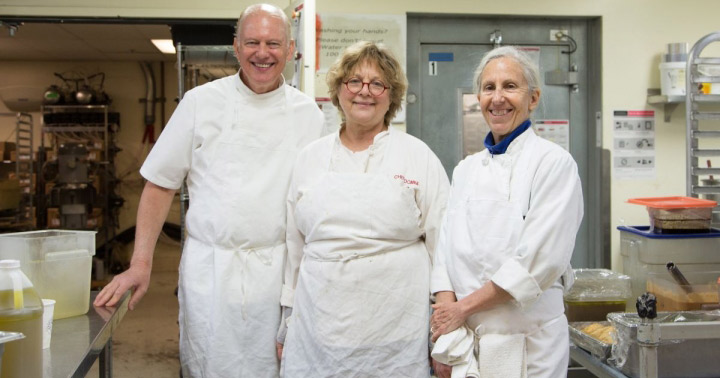

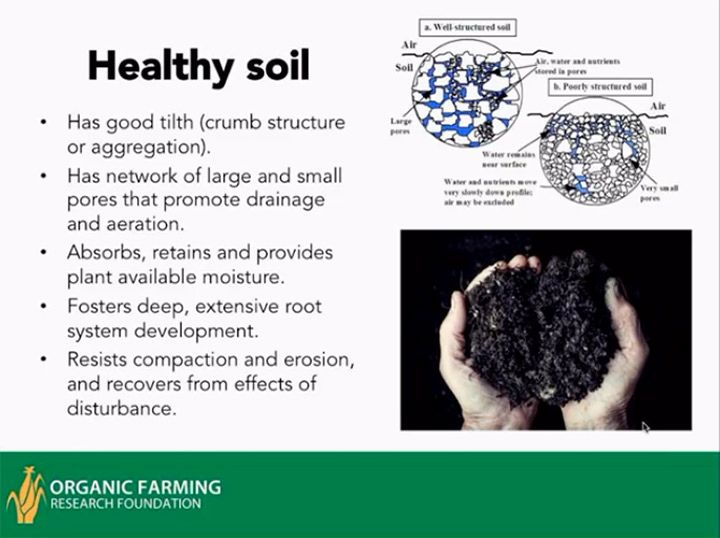
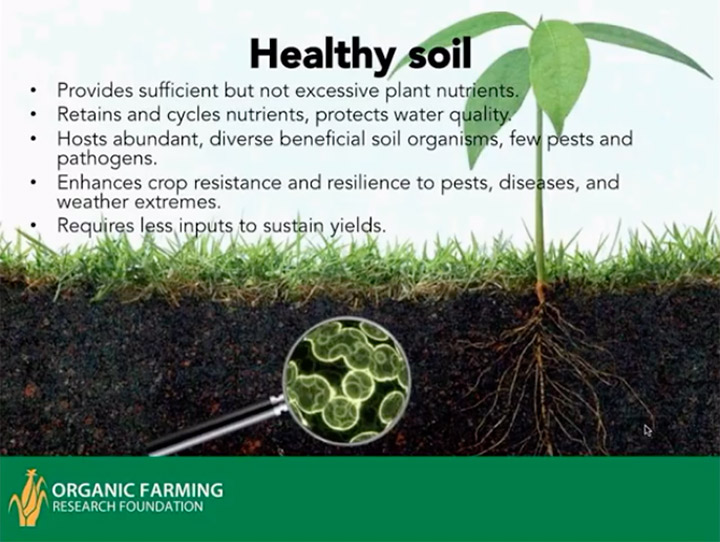
 February 12, 2019 – Newly appointed to the External Advisory Board of the UC Davis Agricultural Sustainability Institute (ASI), OFRF Executive Director Brise Tencer was introduced at the annual meeting in January in Davis, California.
February 12, 2019 – Newly appointed to the External Advisory Board of the UC Davis Agricultural Sustainability Institute (ASI), OFRF Executive Director Brise Tencer was introduced at the annual meeting in January in Davis, California.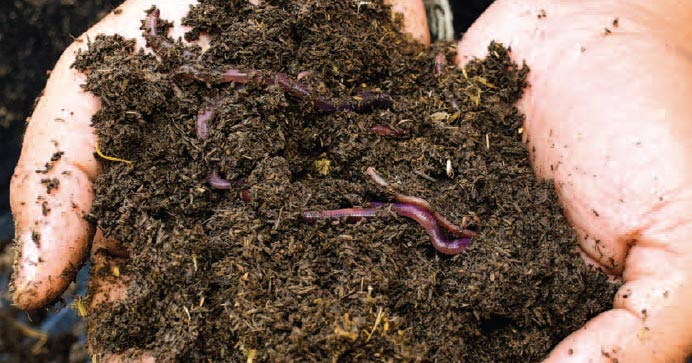 January 29, 2019 – OFRF’s research program got a big boost thanks to a matching grant from the Foundation for Food and Agriculture Research (FFAR). The $66,000 match will be used to support OFRF’s 2019 organic research grant awards related to soil health, including carbon sequestration, reduced tillage systems, and fertility management focused on reducing environmental impacts and improving soil health.
January 29, 2019 – OFRF’s research program got a big boost thanks to a matching grant from the Foundation for Food and Agriculture Research (FFAR). The $66,000 match will be used to support OFRF’s 2019 organic research grant awards related to soil health, including carbon sequestration, reduced tillage systems, and fertility management focused on reducing environmental impacts and improving soil health.